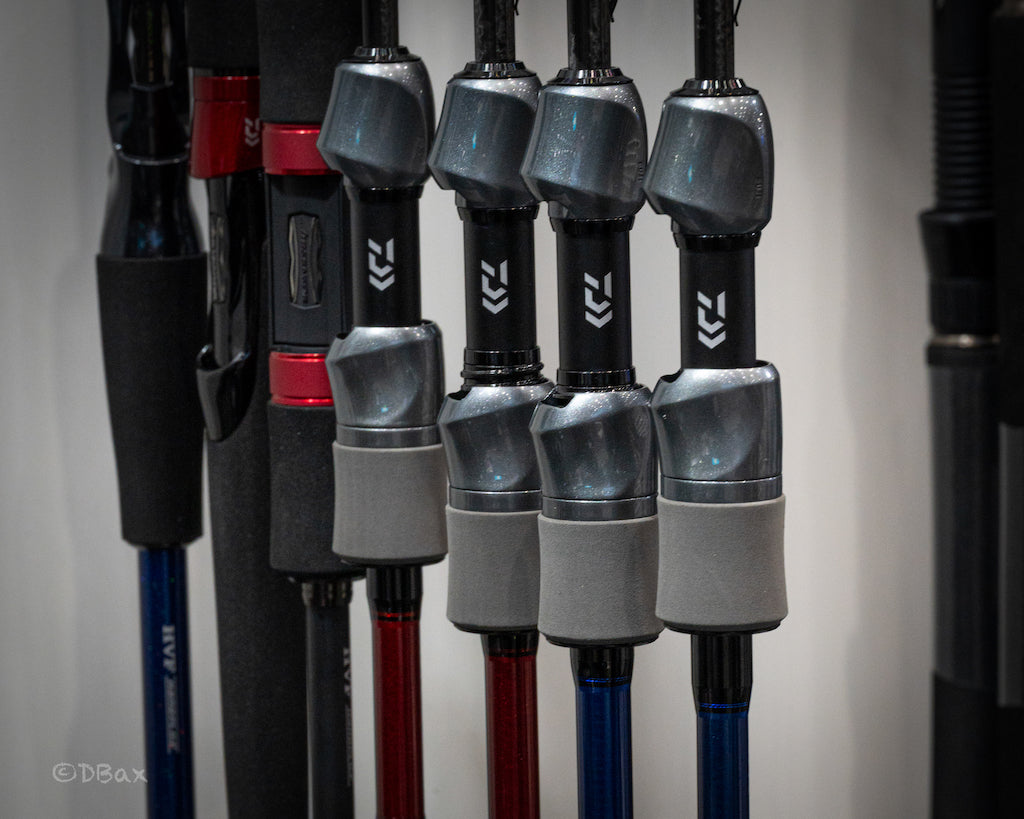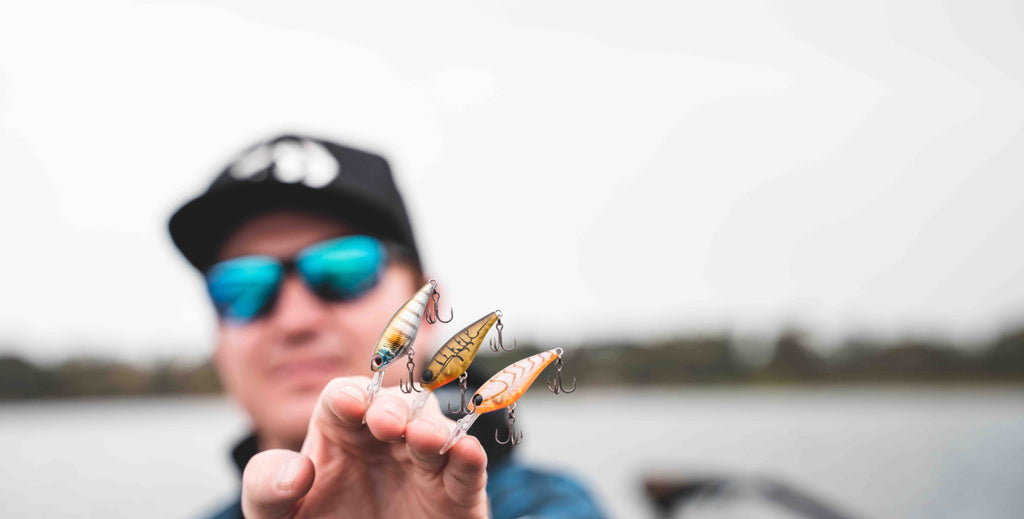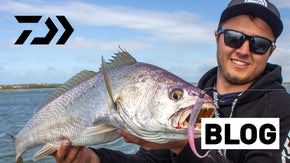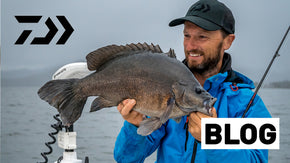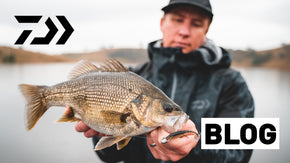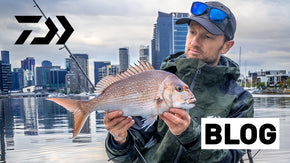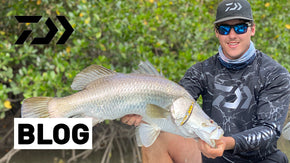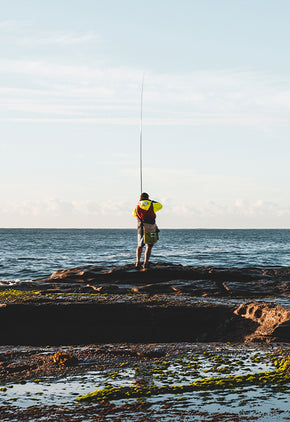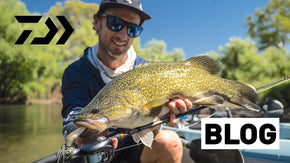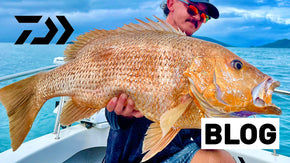Posted 10th November 2023
How to Fish Spinnerbaits
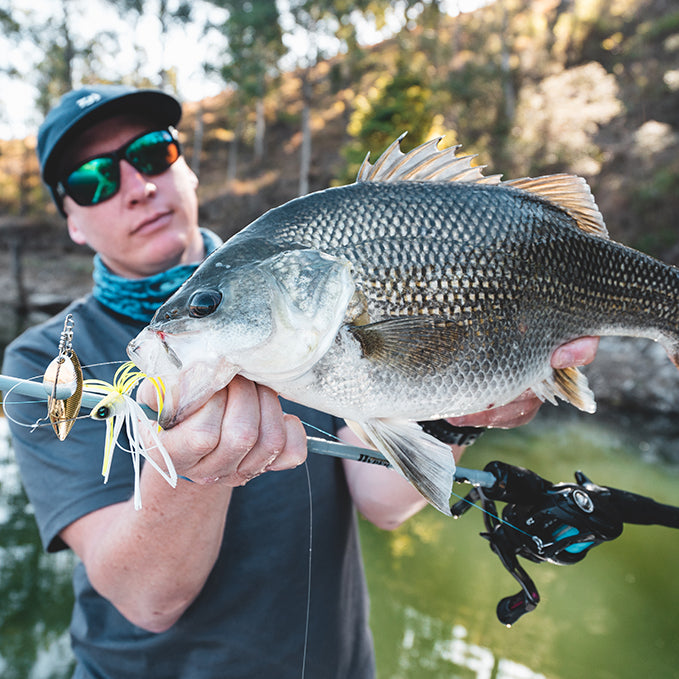

By Robert Thornton
There have been countless ‘crazes’ pop up in the Australian fishing community over the years, and while many have come and gone there are a few that have outlasted the initial hype.
Spinnerbaits are one of those phenomena. These strange looking contraptions made their way to our shores from the US over 30 years ago but were quickly appropriated by Aussie anglers. Over time they’ve gradually become a pillar of our freshwater sportfishing scene for one simple reason: they catch fish!
For this blog we’re going to look at different spinnerbait types, how they’re used, the best tackle for each and the species they catch. We’ll also get some input from someone who has been there since the very beginning – this one should be interesting!

Spinning beginnings
Before we had Aussie-made designs to suit local species pretty much all spinnerbaits came from the US. Daiwa Australia’s own Simon Goldsmith can remember using these over-sized coat hangers with skirts and blades intended to catch American largemouth bass.
“I got onto spinnerbaits in late ‘90s,” he recalls, “pretty much when impoundment bass fishing was taking off in SEQ.”
“In the early days if you wanted a half ounce spinnerbait it was an enormous largemouth spinnerbait,” he continues, “which is okay for cod, but if wanted a small, compact and heavy model suited to slow rolling around structure for bass and yellowbelly, it was a hard thing to find.”
Once anglers realised how effective of these lures were, forward-thinkers began developing more compact configurations locally. At the same time, others started importing spinnerbaits more suited to our fishery from Japan.
“The increase in availability of high-end Japanese spinnerbaits opened peoples’ eyes a bit,” Simon says, “and once anglers gained an appetite for JDM [Japanese Domestic Market] products, more became available.”
The rapid uptake of lure fishing in the late ‘90s and early 2000s also saw developments in tackle, such as longer rods, braided lines and better baitcasting reels. Many of these developments allowed anglers to fish spinnerbaits more effectively.

Why use a spinnerbait?
Anyone who regularly targets species such as bass, yellowbelly, sooty grunter, Murray cod, saratoga and redfin perch will likely have at least a few of these in their box, and this isn’t some weird coincidence. These lures have proven deadly on aggressive freshwater species, and are to the Australian native chasers what inline spinners are to trout anglers: a must-have in the box!
“They’re a great searching bait,” Simon says, “especially when I’m at a lake or river for the first time and I’m not sure where or what the fish are eating.”
“You can roll them along a bank and fish them just under the surface through shallows, or you could fish slow and deep, you can bump them through timber, bring them through grass…”
“They’re highly versatile,” he goes on, “and you’re able to cover many different types of terrain depending on which spinnerbait you tie on and how you fish it.”
These days Simon uses them less as searching baits like he used to and tends rather to be more specific with his approach.
“In Eungella Dam for example I’ll often use them in the shallows [for sooty grunter],” he explains, “I’ll use them in anything under 2ft because I can cast them a long way, work them quickly and the spinnerbait won’t tend to get hung up like a lure with trebles might.”
“It rings like a dinner bell to these fish!”
“The flip side is that later on when the sun gets up,” he continues, “I will fish them really slowly in deep trees, methodically bumping them through the timber.”
“I can get a spinnerbait down there and knock on those trees, and once again they will seldom get hung up.”
“Other lures will do similar things,” he adds, “but they often don’t have the same level of presence and annoyance as a heavy spinnerbait.”

Spinnerbait specifics
Spinnerbaits have a few properties that can be mixed and matched to tailor them to a specific purpose, and understanding these properties and what they can do to the performance of the lure is key to successful spinnerbait fishing.
Blades are a key feature of any spinnerbait. The two main blade types are willow (elongated like a willow leaf), and Colorado (more or less round in shape). As a general rule, willow blades have less resistance in the water and therefore allow spinnerbaits to sink faster if fishing deep, plus they also can be worked faster without ‘blowing out’ in shallow water. Colorado blades on the other hand have more resistance, and because of this Colorado-bladed spinnerbaits will sink slower and send out more vibration.
Spinnerbaits can have one, two or even several blades, and sometimes they will have a mixture of willow and Colorado blades.
Skirts play a role in attracting fish to spinnerbaits, and there is plenty of room for customisation with skirts. Spinnerbaits with longer or thicker skirt material can present a larger profile in the water, and conversely sparser or shorter skirts can reduce the presence of the spinnerbait. Keen spinnerbaiters will often add, remove or trim skirt material as they see fit.
Trailers (usually in the form of a soft plastic) can be added to the hook in the same way a soft plastic is rigged onto a jighead, and this is another great way to add extra profile and vibration to your presentation.
Another configuration worth mentioning is jigspins, often known as ‘beetle spins’. A beetle spin is a jighead rigged soft plastic with a wire and blade system clipped onto the towpoint of the jighead. This sort or presentation is great for when vibration and flash is needed, but not something as ‘in your face’ as a traditional spinnerbait. The downside to this presentation is that the system is not rigid and allows the jighead to roll, meaning the hook point will catch on structure a lot more easily. With a traditional spinnerbait the wire is moulded into the head weight to make it rigid, and in this way it acts as like a weed guard.
Trailer hooks, often known as ‘stingers’, can also be added to any spinnerbait or beetle spin set up. These can be helpful if you’re getting a lot of short strikes, however they can increase the snagablity of a spinnerbait and many anglers tend to avoid them where possible.

Spinnerbait tackle
“Most of my spinnerbait fishing is done with a baitcaster,” Simon says, “I want that feel and tight contact you get with a baitcaster.”
“I may use a spin outfit if using finesse spinnerbaits or a jigspin,” he adds, “but 90% of the time I’m using a baitcaster.”
Chasing species such as bass, yellowbelly, sooty grunter and saratoga with 1/8, 1/4, 3/8 and 1/2oz spinnerbaits can be done with similar tackle, and Simon reckons the Tatula range of rods and reels (70, 100 and 150 sizes) are a great place to start. The new 23 TD Black range of rods are another good rod option, with the medium-light Finezza and light Basstik models worth checking out.
When chasing larger species like Murray cod and barramundi, a 200 or even 300 size baitcaster will hold the heavier line and have the greater drag capacity (6kg and 13kg respectively) that these species demand. Again in the 23 TD Black range, the medium-heavy Cranky, Scope Sniper and Mullet are excellent shorter and longer rod options respectively for these heavier applications.
“As an allrounder you probably want around a 6.3:1 gear ratio in your reel,” he explains, “When working quickly or amongst deep cover when you sometimes need to gather line in a hurry, a 7.1:1 or higher may be better.”
Simon also likes to tailor the rod he uses to the area he’s fishing. Whatever rod Simon uses for his spinnerbaiting though, he always opts for a fast taper to help deliver these relatively heavy lures.
“When I’m fishing shallow I don’t need an ultra-long rod,” he says, “something around 6ft 4 or 6ft 8 is fine.”
“If I’m fishing deep around structure, I’ll tend to go for something a little longer, around 6ft 9 or more,” he explains, “and this allows me to guide it through trees and other structure more easily.”
Put your own spin on it
With virtually infinite avenues for customisation and application, these recommendations are merely just that. Simon’s approach is a good guide, but experimenting with different spinnerbaits and tackle will help you work out what’s best for you and your fishing.
Spinnerbaits can be effective almost anywhere and can be delivered with a range of tackle, and this is exactly why they have remained a top performing lure for decades. As someone who has seen spinnerbait techniques and tackle develop for over 30 years, Simon agrees that these lures have earned their place in the Australian tackle market.
“For me they’re a great allrounder, and relatively easy to use.”
What the next few years and decades hold for spinnerbaiting is anyone’s guess, but there is little doubt that these curious creations will continue catching trophy fish.

 Contact Us
Contact Us Blog
Blog About
About
